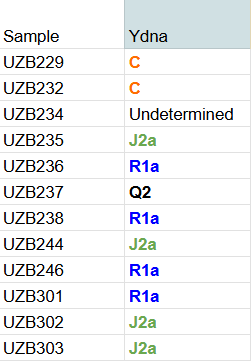
Uzbeks 23andme format files
Long before Uzbekistan was called Uzbekistan, this land was home to ancient civilizations. The Sogdians in Samarkand and Bukhara, the Khorezmians along the Amu Darya, and the Bactrians in the south shaped the region.
They built walled cities, irrigated fields, and trading hubs that connected Persia, India, and China. The Silk Road ran straight through here, making these cities some of the wealthiest and most cosmopolitan in the ancient world.
With the Arab conquest in the 8th century, Islam spread across the region, blending with local traditions. By the 9th and 10th centuries, cities like Bukhara became centers of science, poetry, and philosophy, producing scholars such as Avicenna and Al-Biruni.
From the 6th century onward, Turkic tribes like the Karluks and Oghuz settled here, mixing with the older Iranian population. Their languages and traditions took root, laying the foundation for modern Uzbek identity.
In the 13th century, Genghis Khan’s Mongols swept across the land. Many Mongol tribes stayed, eventually adopting Turkic speech and Islam, further shaping the ethnic fabric of the region.
In the early 16th century, Uzbek tribes under the Shaybanids swept into Transoxiana, uniting the land under their rule. Over time, powerful khanates emerged: the Khanate of Khiva, the Khanate of Kokand, and the Emirate of Bukhara.
These states balanced nomadic traditions with the heritage of settled cities, and their rulers kept alive the cultural brilliance of the region, even as Central Asia became increasingly divided.
For this video, I gathered the raw DNA of 12 Uzbeks from Khorezm from the aadr + .HO dataset.
I used my trait predictor tool to analyze their DNA and predict phenotypes and traits.
